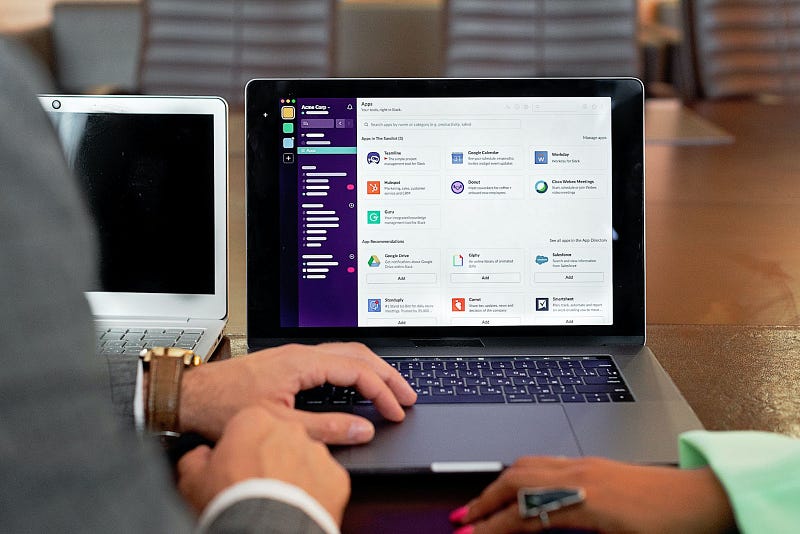Small businesses are the backbone of the American economy. According to the U.S. Small Business Administration (SBA), small businesses account for 99.9% of all businesses in the United States, and they employ more than half of all private-sector workers.
Given their importance, it’s no surprise that small businesses are always looking for ways to get the most out of their small business administration (SBA) teams. In order to make the most of your team, you need to ensure that everyone is working together towards the same goal and that everyone is properly coordinated.
Not sure where to start? In this article, we will look at how you can achieve this and get the most out of your small business administration team.
Let’s begin!
Defining roles and responsibilities
Like any other team, the small business administration team needs to be clearly defined in terms of roles and responsibilities. This will help to ensure that everyone is on the same page and knows what is expected of them.
Team leader
The team leader should be responsible for the overall coordination and management of the team. As the head of the team, they should ensure that everyone is working together towards the common goal and that all tasks are completed effectively and on time.
When choosing your team leader, it is important to find someone who has the necessary skills and experience to lead a team. They should be able to motivate and inspire their team members, as well as manage any conflicts that may arise.

Team leaders can expect to undertake the following duties:
- Defining the team’s purpose and vision
- Planning and organizing team meetings
- Coordinating tasks and ensuring that everyone is working together towards the common goal
- Motivating and inspiring team members to achieve results
- Dealing with any conflicts that may arise within the team
Administrator
The next role to assign is that of the administrator. This person is responsible for maintaining and updating the records of the team. They are also responsible for handling communications within the team and with other departments or external stakeholders.
Administrators should be meticulous and have an eye for detail. They should also be able to handle multiple tasks simultaneously and have good organizational skills.
As the administrator, one can expect to be responsible for the following:
- Maintaining and updating the records of the team
- Handling communications within the team and with other departments or external stakeholders
- Creating, maintaining, and distributing meeting agendas and minutes
- Coordinating travel arrangements and accommodations for team members
- Organizing social events for team building
Analyst
Next is the role of the analyst. This person is responsible for conducting research and compiling data in order to support decision-making. They also identify opportunities and recommend solutions, as well as monitor and report on team performance.
The best analyst is the team member who can take data and turn it into actionable insights for the business. They can help to improve performance by providing recommendations for process improvement or new strategies.
Analysts will undertake different tasks depending on the size of the business. In a small business, the analyst may be responsible for conducting market research and competitor analysis in order to understand the landscape in which they are competing. They may also be involved in financial analysis to assess whether the company is making a profit or loss.

Other roles
Once the leader, administrator, and analyst have all been defined, the rest of the team’s roles and responsibilities can be easily outlined:
- The bookkeeper will keep track of the company’s financials, make sure bills are paid on time, and manage the company’s budget.
- The marketing assistant will create and oversee all marketing campaigns, both online and offline. They will also develop new marketing strategies to attract new customers.
- The customer service representative will be the first point of contact for customers and will be responsible for fielding questions, resolving complaints, and handling returns. They will also track customer feedback to improve the company’s customer service.
- Finally, the web developer will create and maintain the company website and online presence.
Make sure everyone is aware of their duties and roles so that there is no confusion and everyone can work together as a team.
Encouraging communication
Of course, the cornerstone of an excellent team — no matter their purpose — is clear, effective communication. This means encouraging your team members to communicate with one another as frequently as possible. The more open and communicative your team is, the better they will be able to work together.
In order to facilitate communication, consider establishing regular team meetings. This will give everyone a chance to catch up on what’s been going on, and to discuss any upcoming projects or challenges.
Additionally, be sure to establish clear lines of communication between team members and between team and management. This will help ensure that everyone is always kept in the loop.
Here are five foolproof tips for improving your team’s communication:
- Encourage everyone to communicate openly with one another. How? By setting the example yourself.
- Make sure that team members have all the necessary information to communicate effectively with one another. This includes things like job descriptions, contact information, and meeting agendas.

3. Encourage team members to ask questions, and make sure there is a culture of openness and curiosity within your team.
4. Be prompt in answering team members’ questions and addressing their concerns. Don’t ignore feedback when you receive it, but rather move to address it as soon as possible.
5. Regularly hold team meetings so that everyone can stay up to date on what’s going on.
The power of clear and effective communication cannot be overstated!
Using tools and resources to streamline your team
In 2022, the number of apps and software available for work teams is astounding. There’s an app for almost everything, and many of these are designed to help small businesses run more smoothly. Utilizing the right tools can help your team work together faster and smarter.
For example, email is one of the most important tools for any team. It allows team members to easily communicate with one another, regardless of location. But not all email platforms are created equal. Some offer more features than others, such as the ability to create task lists or share files.
Another important tool for team productivity is a project management app. This type of app allows team members to collaborate on projects and track progress. There are many different project management apps to choose from, so find one that fits your team’s needs.
If your team is spread out across different time zones, consider using a tool like Slack or Zoom to help them stay connected. These tools allow for real-time communication and collaboration. They can be especially helpful for teams that are working on a project together.

Ultimate teamwork tools list
If you’re stuck on which apps to try out for your team, here is a list of apps and their uses:
Google Drive: for creating and sharing documents. You can also track changes to documents, which is great for collaborative work.
Asana: for task management. Create tasks, assign them to team members, and track their progress.
Trello: for organizing projects. Create boards and cards, and track the progress of each card.
Evernote: for taking notes. Open notebooks, add tags and notes, and share notebooks with team members.
Dropbox: for sharing files. Share folders with team members, or you can send links to files.
Hootsuite: for managing social media accounts. Schedule posts, track mentions, and analyze your social media performance.
Google Calendar: for scheduling meetings. Create calendars, invite team members, and track who has accepted or declined.
Day.io: for tracking how you spend your time. With Day.io you can see how much time you’re spending on different tasks, and you can set goals to help you stay productive.
No matter which tools you decide to use, make sure everyone receives the proper training on how to use them to their full advantage!
Quick tips on Small Business Administration
Communication is key, and resources are abundant — but how else can you get the most out of your administration team?
Encourage creativity and out-of-the-box thinking.
Give your team members the opportunity to think creatively and come up with new ideas. Not only will this help your business grow, but it will also keep your team members stimulated and engaged.
Delegate, delegate, delegate!
The more you can delegate to your team members, the more they can take ownership of their work and feel like they’re contributing to the overall success of the business.
Set clear goals and expectations.
Make sure your team members know what you expect from them and how their work contributes to the overall goal of the business. This will help them stay focused and on track.

Offer training and development opportunities.
Help your team members grow and develop their skills by providing training and development opportunities. This will not only make them more valuable employees, but it will also keep them motivated and engaged.
Celebrate success!
Make sure you celebrate successes — both big and small — with your team members. This will help them feel appreciated and motivated to continue working hard.
Small Business Administration: Final Thoughts
Administrative duties are unavoidable for every business, regardless of its size. No matter how small your business is, you will need to have a team in place to help manage and oversee the various aspects of administration.
Getting the most out of your small business administration team can be a challenge. With the tips laid out in this article, however, you should be able to do just that!
